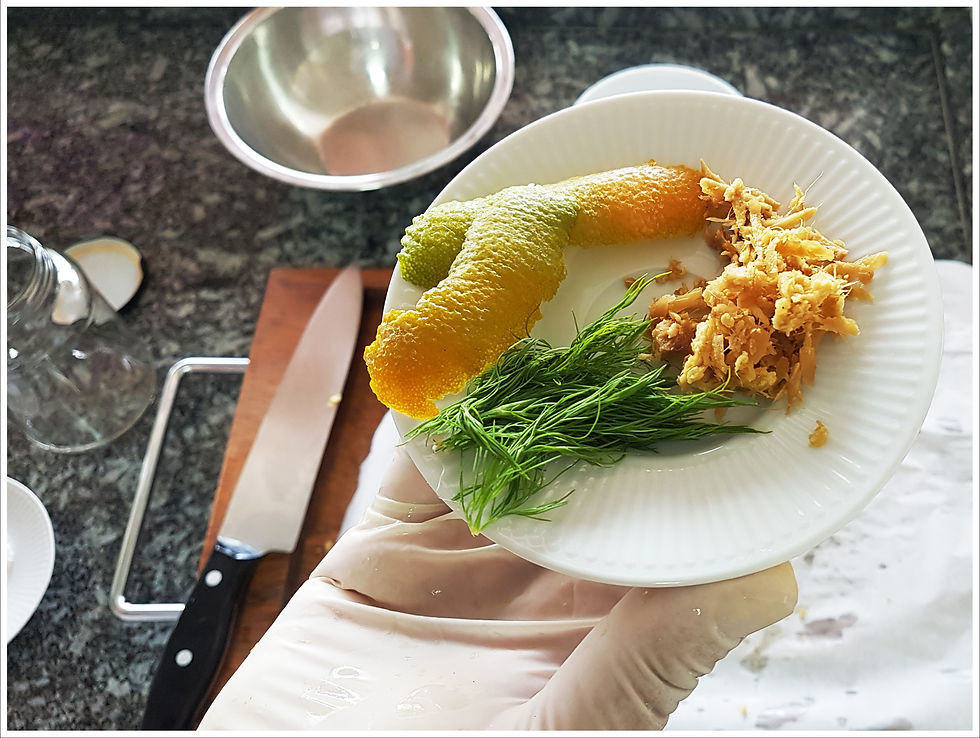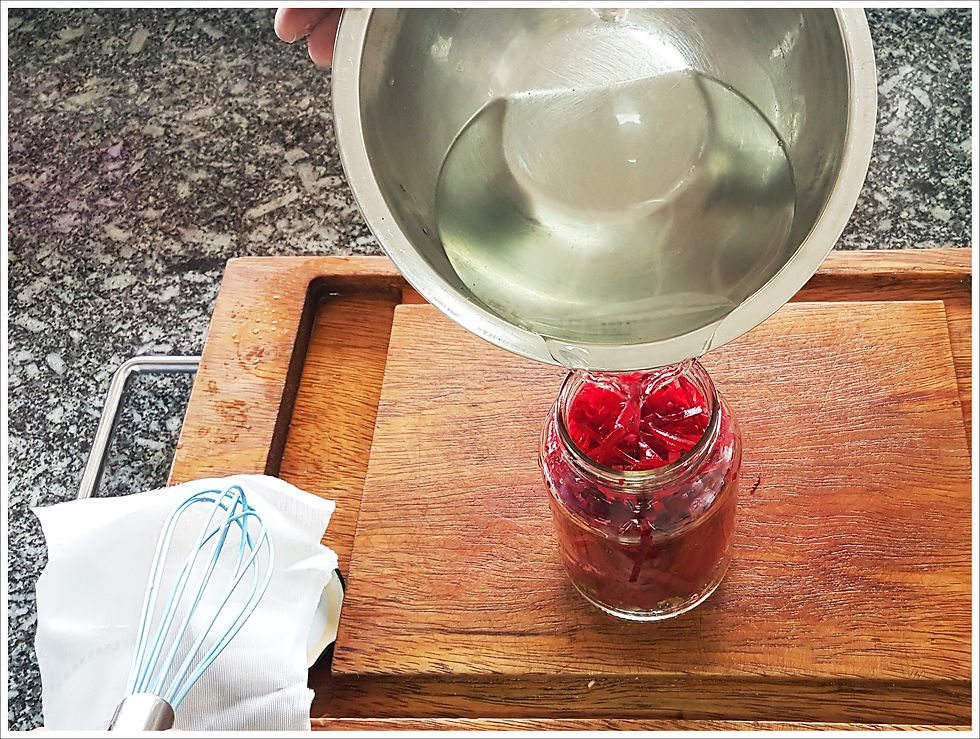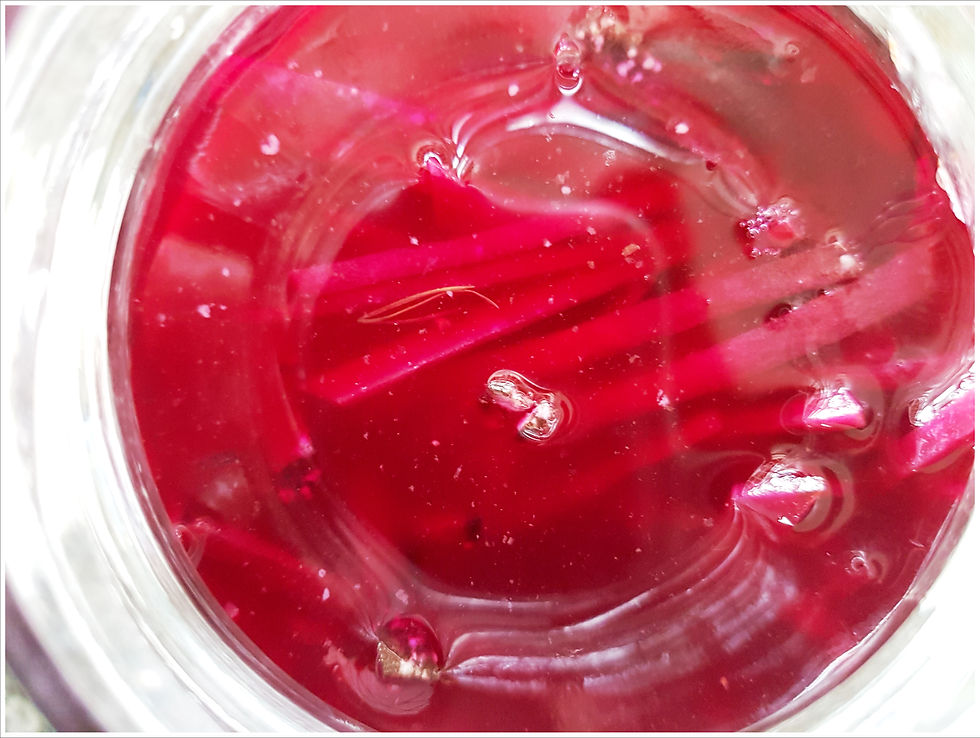Blog #4 Preservation - Red Beetroot Fermentation
- felipegombossy
- 19 de nov. de 2020
- 3 min de leitura

LACTIC ACID FERMENTATION – WHAT IS IT?
It is a simple way of preserving food. You just need to pick your favourite raw vegetable, slice, shred or cut it and mix it with water and 2 % of salt. Better using Kosher or Pink Himalayan Salt because they have fewer impurities.
But what is the chemical process that happens when we add salt into the water? Well, lactic acid bacteria break down carbs and creates an acidic, low-oxygen environment that increases the growth of bacteria that are good for our bodies. At the same time, these bacteria prevent other harmful microorganisms from growing.
Yeast strains and bacteria convert starches or sugar (beets are rich in sugar) into lactic acid, and there is no need for heat during the preparation.

FERMENTED PICKLED BEETS
Fermented pickled beets are rich in a type of bacteria that is considered healthy for us: probiotics. They make it easier for our digestive system to break down foods and absorb their nutrients. Besides that, probiotics can also protect us from harmful bacteria, as well as reduce gas, constipation, and bloating.

RECIPE
2 red beetroot
350ml water
7g Kosher salt (Pink Himalayan Salt)
1 orange zest
1 tbsp ginger grated
1 bunch dill
500ml Glass Jar +
1 piece cloth
INSTRUCTIONS
Cover your cutting board with parchment paper to avoid the beets to stain it. Peel the beetroots and cut them in julienne (long thin strips, similar to matchsticks). Reserve.

Process your flavour ingredients. Peel and grate the ginger. Wash and dry dill leaves. Peel ¼ of an orange with a peeler (orange zest) and reserve.

In a bowl, mix the water and the salt till dissolved. That is the “Brine”. Salt must be 2% of the volume of the water (350ml Water = 7g Salt).

Place the flavour ingredients (ginger, dill and orange zest) in the bottom of the jar. Then, place the beets cut and pour the brine over the beets. Stop when brine is 1 cm from the top of the jar.



Cover with the cloth and close the jar loosely using the lid. That will allow the gases created by the fermentation process to escape from the jar. Otherwise, your jar would explode.

Store the jar from 6 to 10 days out of direct sunlight to ferment until bubbling stops.

The greatest moment arrives after bubbles have stopped rising to the surface. Eat the beets directly from the jar or use them to top a salad, or whatever you want. Enjoy it.

SENSORY EVALUATION
After 6 days, the fermentation process has stopped: no bubbles rising. I opened the jar and the first thing that happened was the acidic smell of the fermentation.
After a while, I grabbed some of the fermented beetroots and just tasted it. The saltiness is the first thing you taste, then the acidity. After the second bite, you start tasting some herbal layer in the mouth. That is dill speaking. It is also possible to notice some peppery flavour. Probably from the grated ginger. Good combination so far.
After a while, the bitterness from the orange zest starts to pop up. And then you keep all these flavours in your mouth for a while.
A powerful and complex taste, with different layers coming in different timings.
Visually, beets are still super red/purple. Even though you do not previously cook the beets, the julienne sticks are crunchy, like firm to the bite.


The surprising thing is that you do not taste the sweetness from the beet’s sugar. I believe that the chemical explanation for that is that all the sugar was transformed into lactic acid.
Next time, I would add less orange zest. Just one thin zest will be enough.
Try the recipe and tell me your impressions.
Bon Appetit.



Comentarios